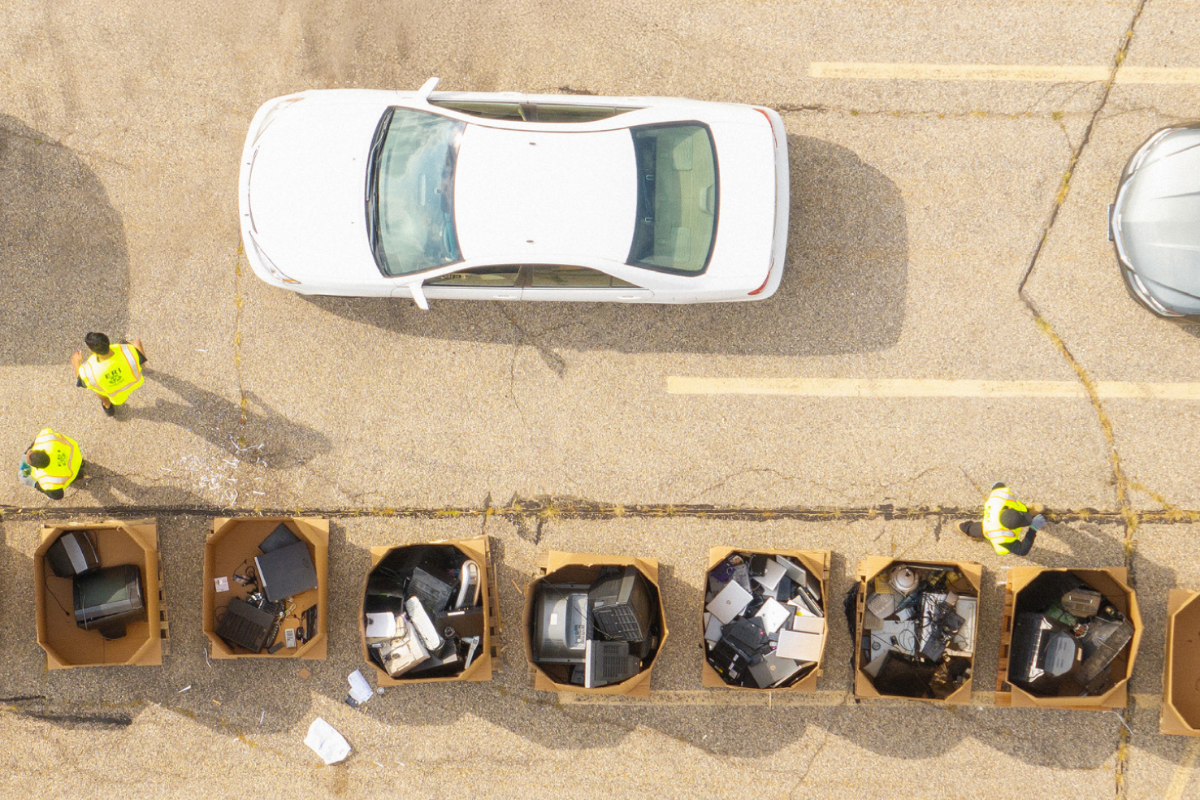
An ERI collection event in Madison, Wisconsin, detailed in the company’s 2024 impact report. | Photo courtesy ERI
Last year was a busy one for ERI, bringing the launch of the company’s first in-house alkaline battery processing facility, establishment of a new stable e-plastics downstream and the rollout of the latest edition of the company’s automated device identification system.
Fresno, California-headquartered ERI, among the largest processors in the U.S., last week published its 2024 impact report, highlighting specific company operational numbers and providing a snapshot of the company’s recent areas of focus.
ERI operates eight domestic facilities with 868 employees in Arizona, California, Indiana, Massachusetts, North Carolina, New Jersey, Texas and Washington. The company collected 107.4 million pounds of electronics in 2024, down by weight about 13% from the prior year. In 2024, 104.7 million pounds were processed for commodity recovery and 2.7 million pounds were processed for reuse, according to the report.
Two of those facilities — in Holliston, Massachusetts, and Lincoln Park, New Jersey — received renovations, upgrades and energy efficiency improvements last year “to meet the increasing demand for recycling services,” ERI reported. The New Jersey plant upped its shredder capacity to be able to handle a wider geographical range of material in the Northeast.
Last year also brought the rollout of ERI’s latest iteration of its SOAR system, a technology the company first introduced in 2022. The equipment uses AI-enabled sensor technology to automate the identification of equipment as it comes into ERI’s facilities. It was first updated at the end of 2022 and early 2023, and 2024 brought the third generation of the SOAR system. It’s currently installed at three company facilities, while the others retain the second generation.
SOAR 3 “uses conveyers, cameras, robotic arms, and AI to automate the process of receiving, identifying, evaluating products for reuse, and managing per client requirements, greatly enhancing our ability to securely, efficiently process more materials and improve our rates of reuse,” ERI reported.
The company’s latest SOAR system can recognize more than 37,000 different makes and models of devices, the company added.
But perhaps the most significant infrastructure development for 2024 took place at ERI’s Indiana facility, where two years of research and development culminated in the launch of a dedicated in-house alkaline battery processing facility alongside the existing shredding and reuse capacity.
The BatCycle line started up last summer and has been processing batteries at a rate of 36,000 units per hour.
“The process involves collecting and sorting batteries, followed by shredding them in a controlled environment,” ERI reported. “Advanced techniques such as magnetic, density, and optical separation are then used to extract and refine valuable materials. The recovered components, including reusable metals and plastics, are repurposed across industries, contributing to sectors like manufacturing, agriculture and more.”
It also produces alkaline black mass, a powdered material that refineries can further process to recover metals such as manganese and zinc, according to ERI.
On the plastics side, ERI reported that 2024 brought “a new partnership for plastics recovery” in the e-plastics resins, such as ABS, PS and PC. The partnership involves a downstream outlet in a country within the OECD, the Organization for Economic Cooperation and Development.
That’s significant because U.S. exporters are otherwise limited in where they can export scrap plastic while complying with the importing country’s laws. The 2021 Basel Convention plastic amendments tightened end markets for U.S. scrap plastic exporters with a ban on trading covered materials between non-Basel-parties, like the U.S., and party countries, the majority of the world.
But OECD nations have an agreement that allows certain scrap plastic exports from the U.S. to OECD countries as long as they otherwise follow Basel criteria.
ERI was able to reach a 90% recovery rate for its e-plastics with its downstream, and “all processes adhere to U.S. regulations, international laws, the Basel Convention, and the stringent standards of e-Steward and R2v3 certifications,” the company wrote.

